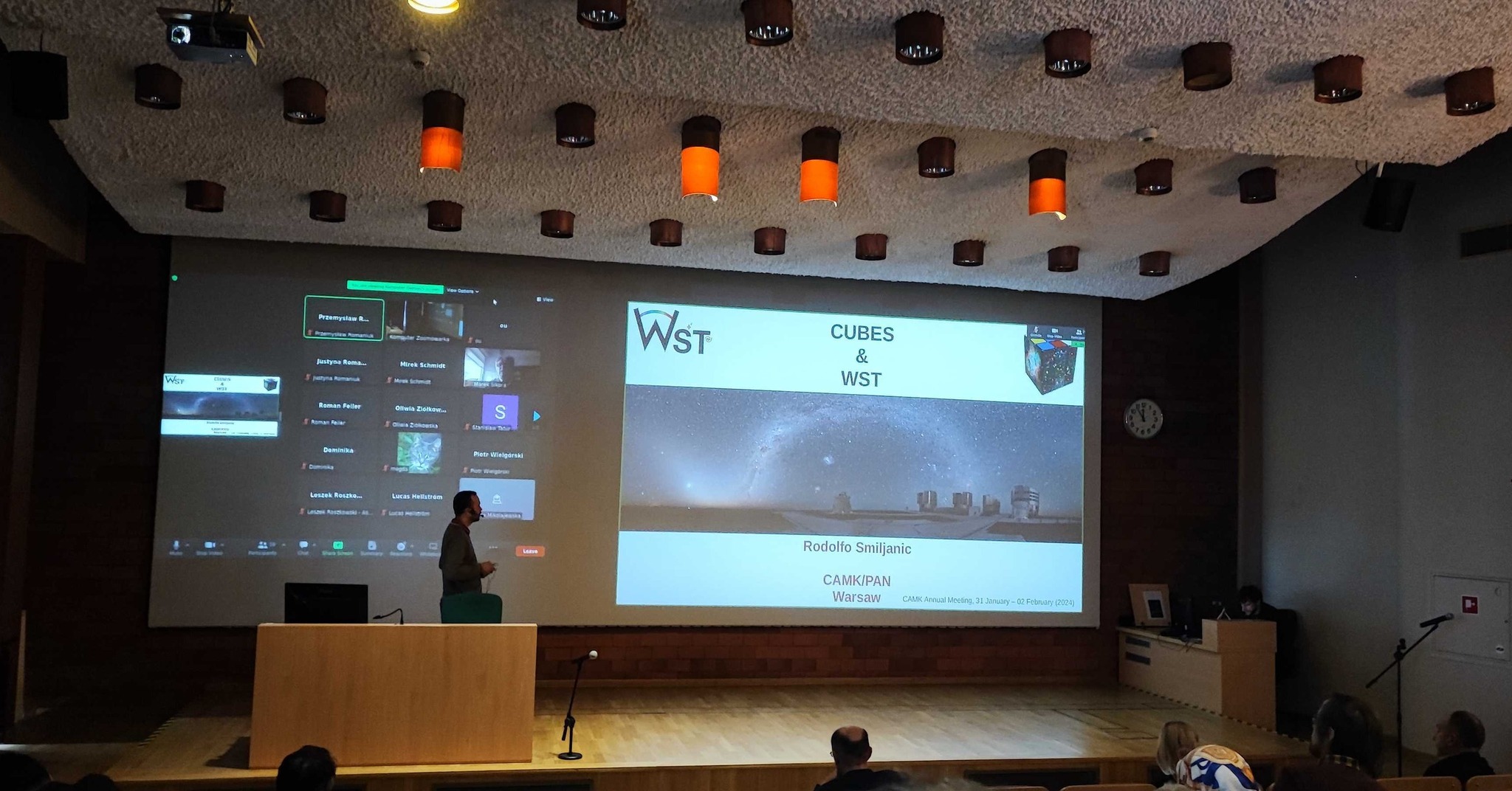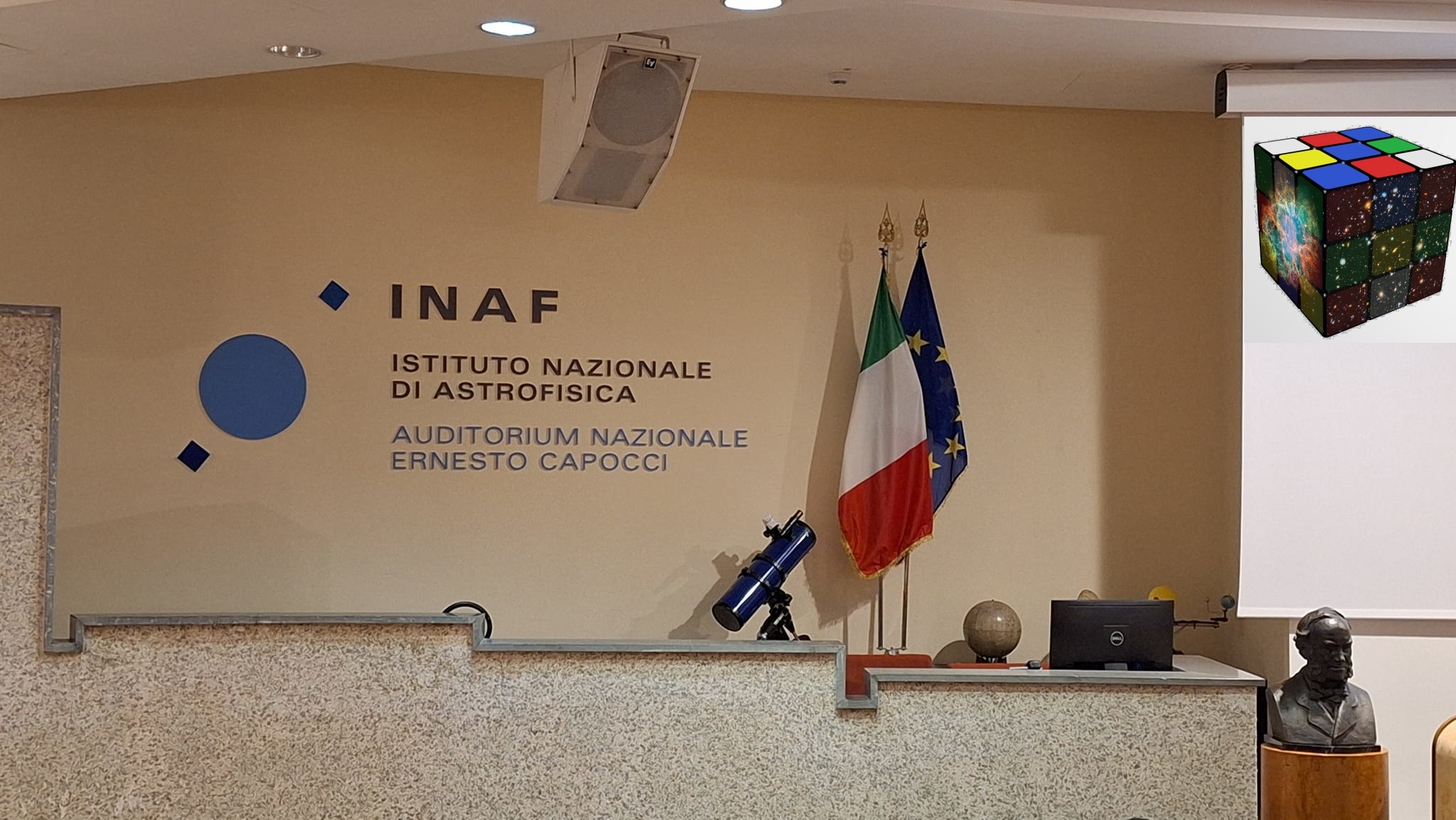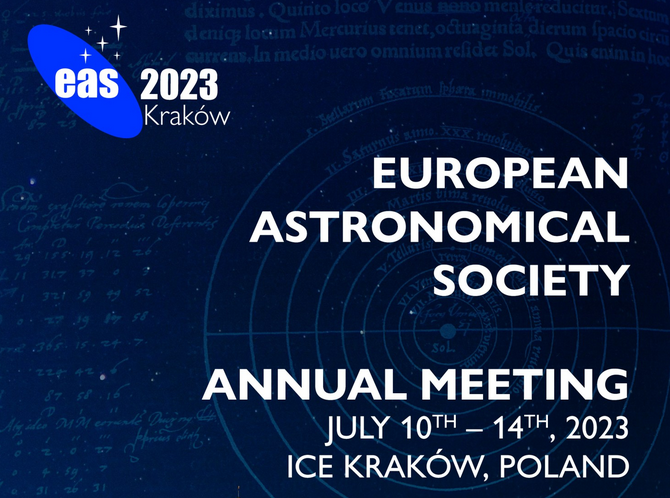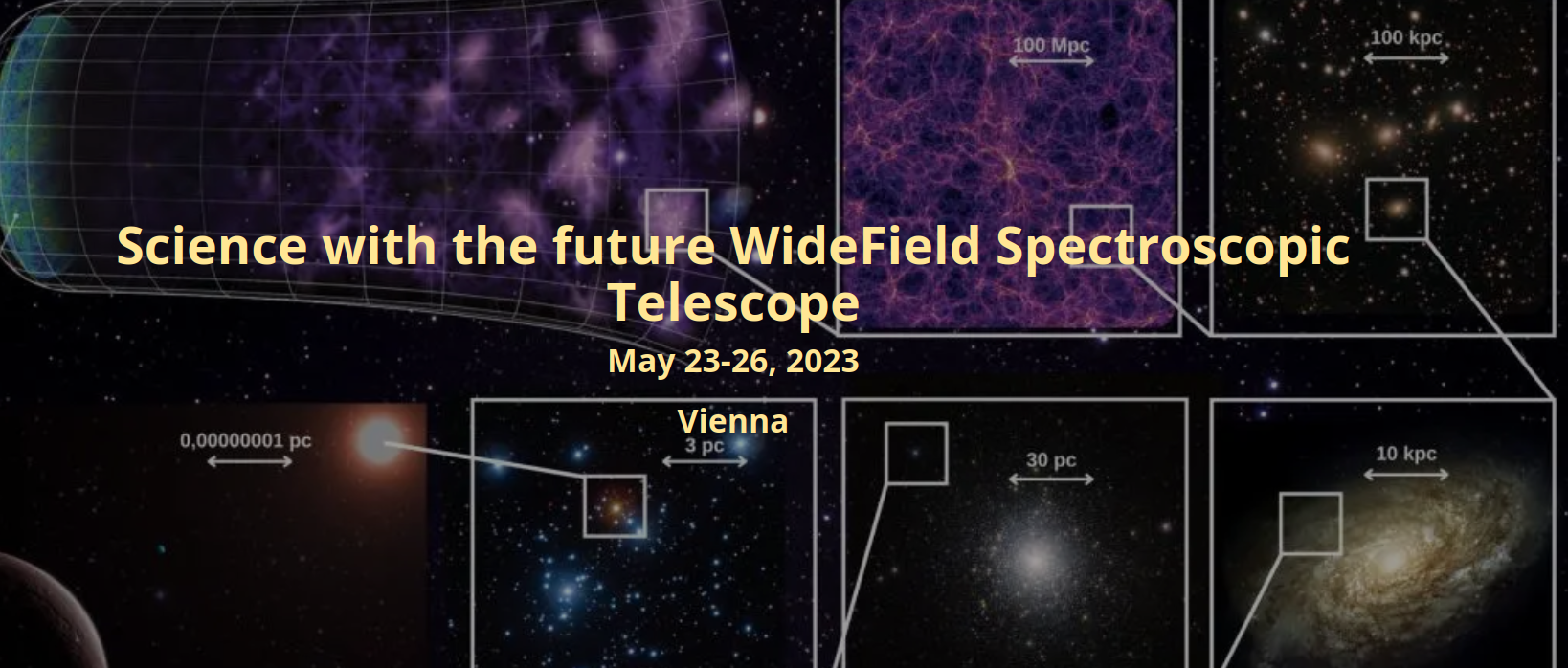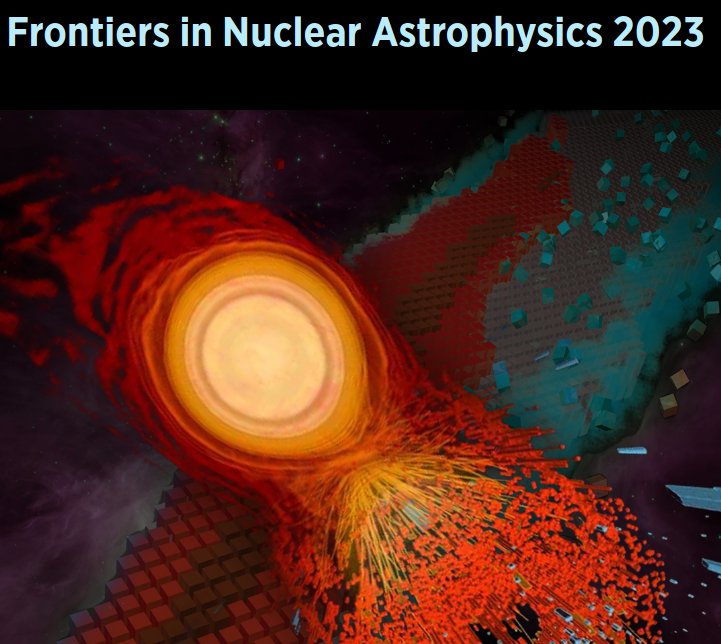Previous research news
PLATO mission paper in arXiv"
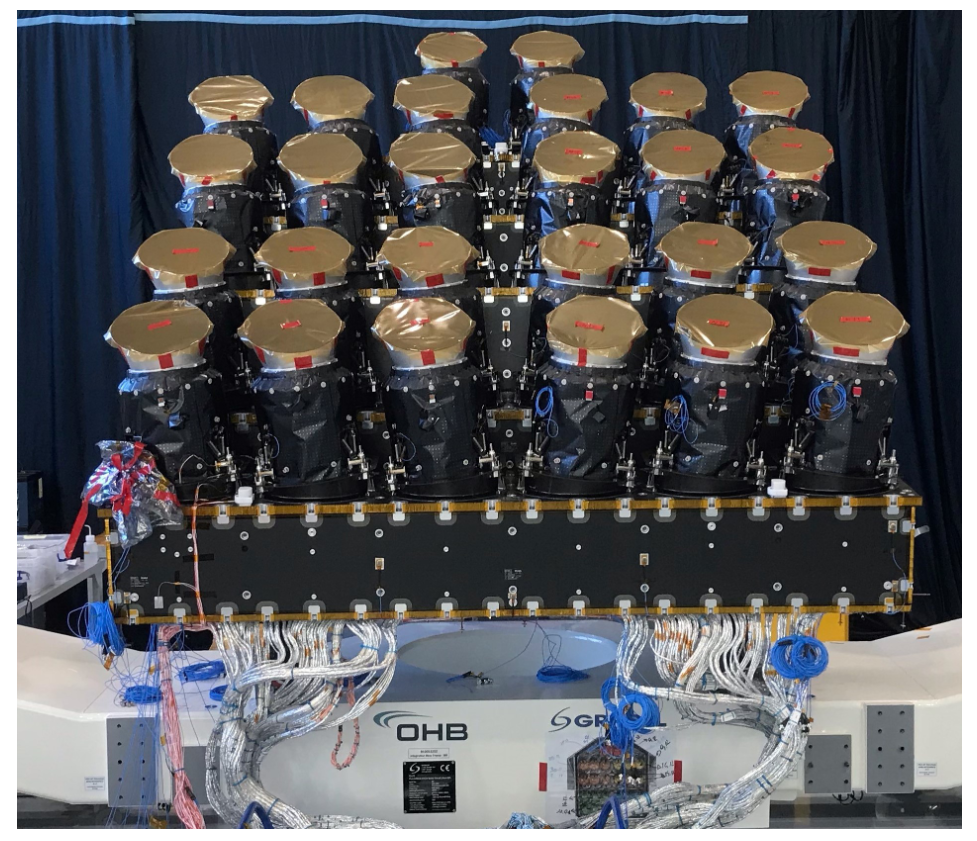
PLATO (PLAnetary Transits and Oscillations of stars) is ESA's M3 mission designed to detect and characterise extrasolar planets and perform asteroseismic monitoring of a large number of stars. PLATO will detect small planets (down to <2 R_(Earth)) around bright stars (<11 mag), including terrestrial planets in the habitable zone of solar-like stars. With the complement of radial velocity observations from the ground, planets will be characterised for their radius, mass, and age with high accuracy (5 %, 10 %, 10 % for an Earth-Sun combination respectively).
The SAGA Team is involved in WP122 (Non-seismic diagnostics and model atmospheres) of the PLATO mission.
WST paper at SPIE "Astronomical telescopes and instrumentation"
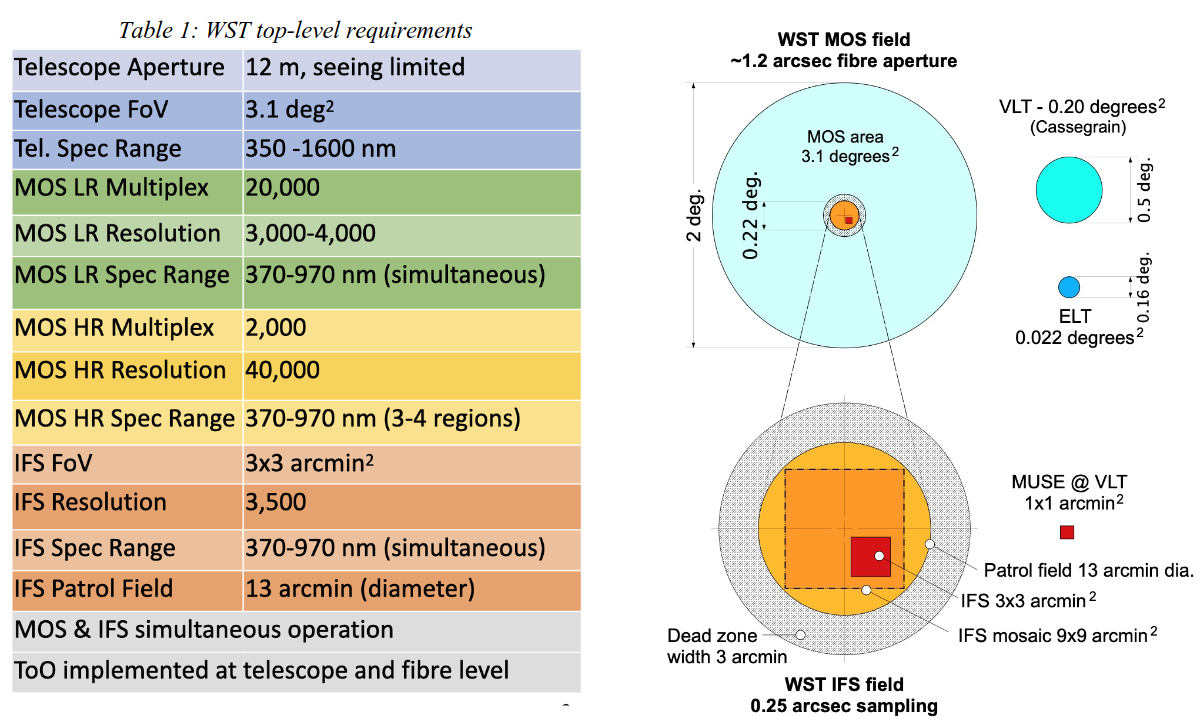
WST is a 12-metre wide-field spectroscopic survey telescope with simultaneous operation of a large field-of-view (3 sq. degree), high-multiplex (20,000) multi-object spectrograph (MOS), with both a low and high-resolution modes, and a giant 3x3 arcmin2 integral field spectrograph (IFS). In only 5 years of operation, the MOS would target 250 million galaxies and 25 million stars at low spectral resolution, plus 2 million stars at high resolution. Without need for pre-imaged targets, the IFS would deliver 4 billion spectra offering many serendipitous discoveries. WST will be proposed as the next European Southern Observatory (ESO) project after completion of the 39-metre ELT.
SAGA Team members are involved in the WST Science Team and R. Smiljanic is co-leading the working group responsible for the exoplanet, stellar, and Galactic science case.
We are hiring!
We are looking for a new post-doc to work on Galactic archaeology with focus on chemical tagging. The successful applicant will join a team led by Dr Rodolfo Smiljanic working on the project "Playing CHESS with stars" funded by the National Science Center (Sonata Bis 9, nr 2019/34/E/ST9/00133). The overall project aims at developing a new and innovative system for the large scale analysis of stellar spectroscopic data. The "CHEmical Survey analysis System" (CHESS) will combine machine learning ideas with the traditional radiative transfer modelling of stellar spectra.
We seek a resourceful and creative researcher who can explore and propose new ideas for investigating the possibilities and limitations of chemical tagging using large datasets of detailed stellar chemical abundances. The post-doc will also collaborate with other team members on the development of the new chemical analysis system.The position is available for 16 months. We are waiting for funding decisions that could enable it to be extended. Application deadline is May 31st. Preferred starting date is September 2024 (negotiable, to some extent).
New Gaia-ESO paper accepted for publication
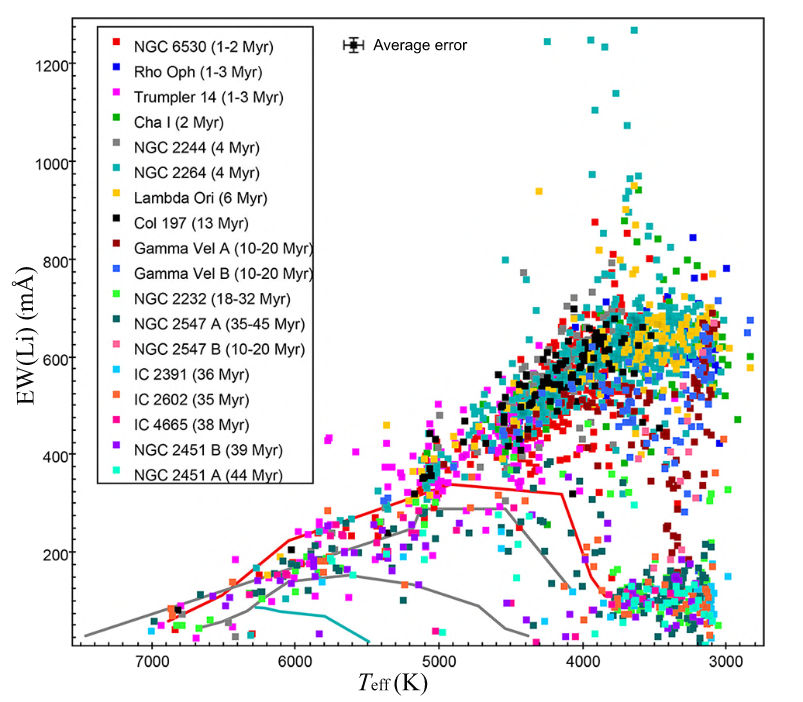
The Li abundance observed in pre-main sequence and main sequence late-type stars is strongly age-dependent, but also shows a complex pattern depending on several parameters, such as rotation, chromospheric activity, and metallicity. The best way to calibrate these effects, and with the aim of studying Li as an age indicator for FGK stars, is to calibrate coeval groups of stars, such as open clusters (OCs) and associations. This is the second paper in a series of three which aims to calibrate the lithium–age relation using stars members of open clusters and associations observed in the context of the Gaia-ESO Large Spectroscopic Survey.
This paper describes the work to obtain the list of stars members of each cluster. The selection of cluster candidate members was compared to numerous existing membership studies using data from Gaia to ensure the most robust results. The final cluster members selection will be used in the third and last paper of this series, which reports the results of a comparative study characterising the observable Li dispersion in each cluster and analysing its dependence on several parameters.
The paper was lead by Marta L. Gutiérrez Albarrán, as part of her PhD work at the Universidad Complutense de Madrid, Spain, and counted with the collaboration of R. Smiljanic, PI of the SAGA Team.
Sleeping giant surprises Gaia scientists
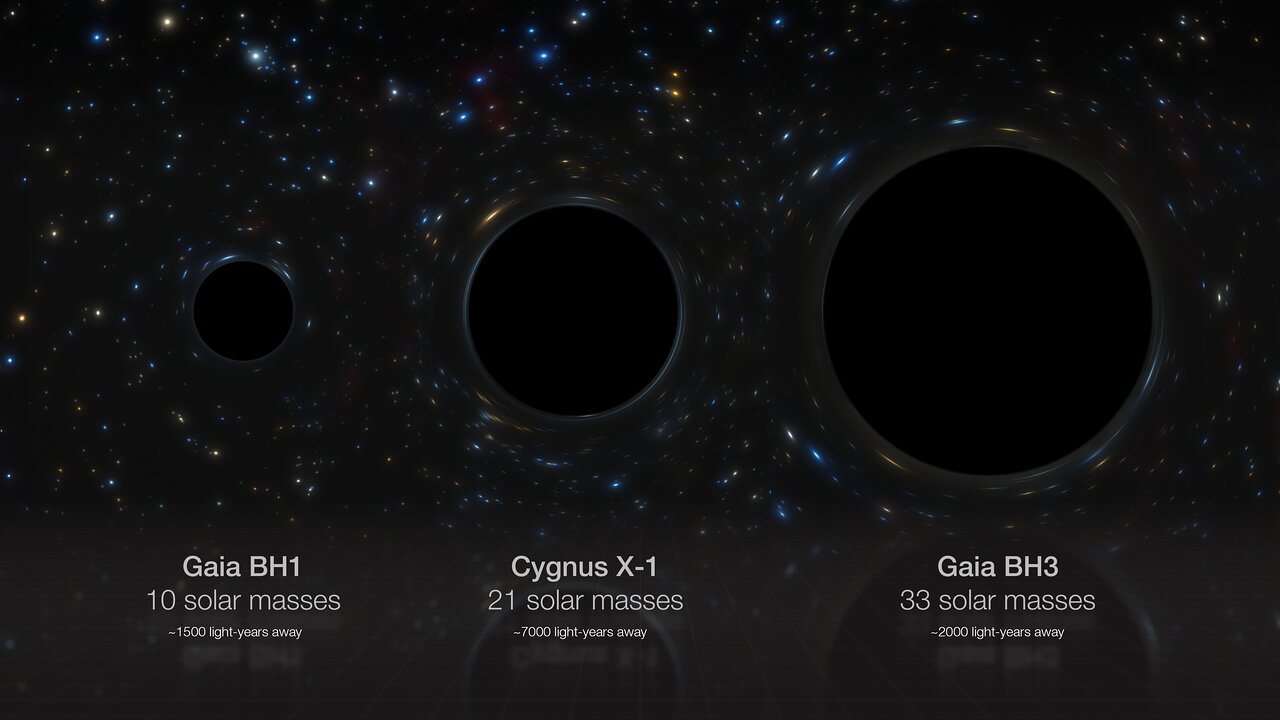
During the work to prepare and check the quality of the data for the next Gaia catalogue, Data Release 4 (DR4), a team of scientists found a big surprise. Analysing in detail the wobble of an old giant star, apparently an outlier in the Gaia data, they discovered that the star was locked in an orbital motion with a dormant black hole of exceptionally high mass, about 33 times that of the Sun.
This is the third dormant black hole found with Gaia and was aptly named ‘Gaia BH3’. Its discovery is very exciting because of the mass of the object. So far, black holes this big have only been detected in distant galaxies by the LIGO–Virgo–KAGRA collaboration, thanks to observations of gravitational waves. The average mass of known black holes of stellar origin in our galaxy is around 10 times the mass of our Sun. Until now, the weight record was held by a black hole in an X-ray binary in the Cygnus constellation (Cyg X-1), whose mass is estimated to be around 20 times that of the Sun.
The new discovery supports, for the first time, the theory that the high-mass black holes observed by gravitational wave experiments were produced by the collapse of primeval massive stars poor in heavy elements. The paper "Discovery of a dormant 33 solar-mass black hole in pre-release Gaia astrometry" by Gaia Collaboration, P. Panuzzo, et al. is published today the journal Astronomy & Astrophysics (A&A).
R. Smiljanic, PI of the SAGA Team, is member of the Gaia Science Team.
WST Science White Paper
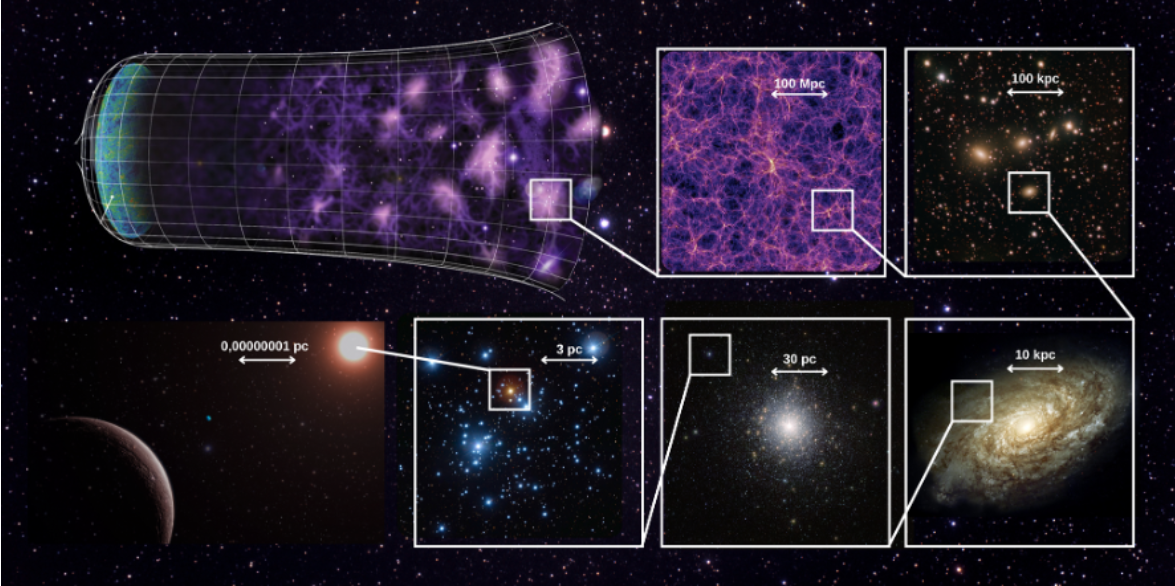
In this white paper of almost 200 pages (!!) we try to answer the question: what transformational science can we do in 10-15 years from now with a 12 metre telescope fully dedicated to multi-object spectroscopy?
WST is a project of a 12-m telescope fully dedicated to multi-object spectroscopy with a large field of view (3.1 sq. deg.). It will have three types of instruments operating simultaneously: 1) A low-resolution (R ~ 4000) spectrograph with ~20 000 fibres covering from the violet, 370 nm, to the near-infrared at 970 nm; 2) A high-resolution (R ~ 40 000) spectrograph with 2000 fibres in 3 or 4 windows still to be chosen; 3) A giant panoramic integral field spectrograph (IFS) in the centre of the field of view, covering 3x3 arcmin2 but able to patrol an area of 9x9 arcmin2. The white paper is organised in thematic chapters covering: i) time-domain astrophysics; ii) exoplanet, stellar, and Galactic astrophysics; iii) resolved stellar populations; iv) extragalactic astrophysics; and v) cosmology.
SAGA Team members are involved in the WST Science Team and R. Smiljanic is co-leading the working group responsible for the exoplanet, stellar, and Galactic science case.
New Gaia-ESO paper accepted for publication
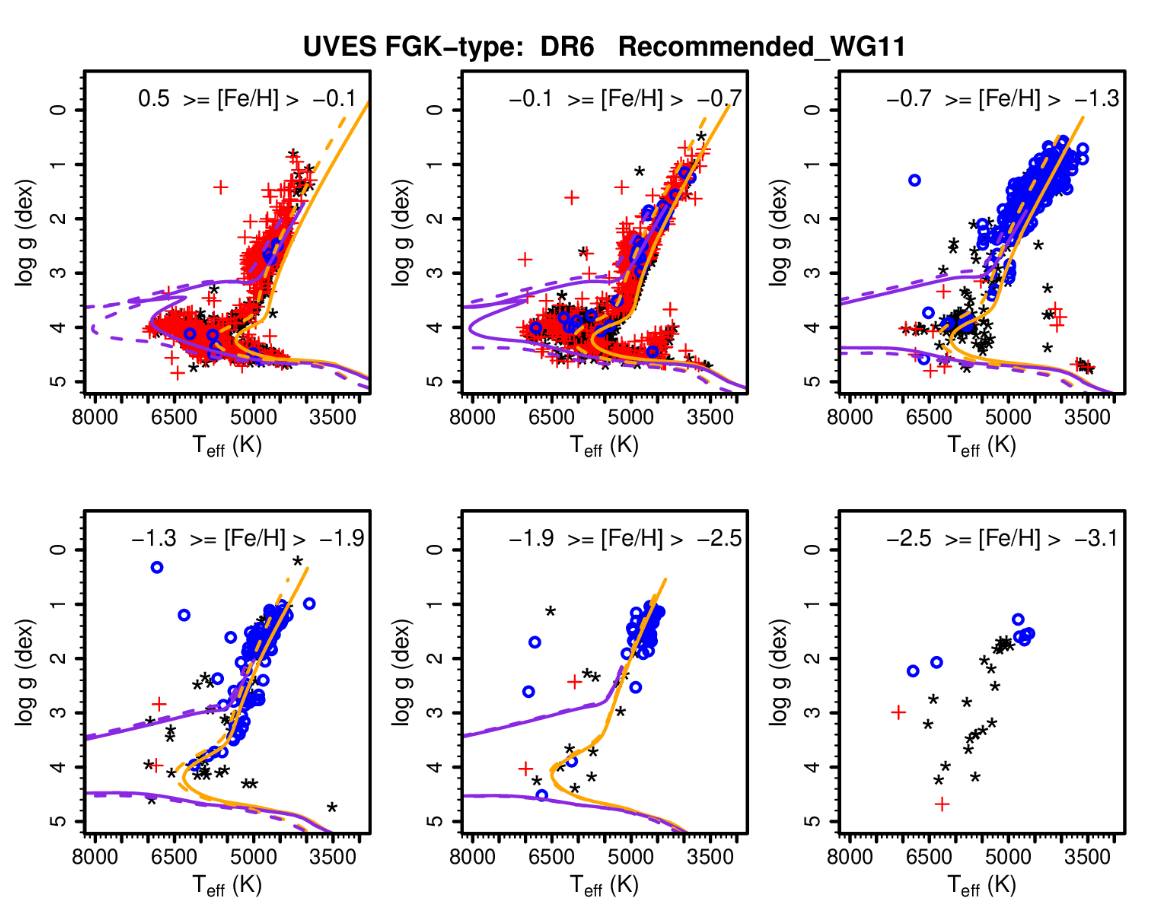
The paper describes the determination of atmospheric parameters and chemical abundances from the spectra of F-, G-, and K-type stars observed by the Gaia-ESO Survey. The Gaia-ESO Survey was a large stellar spectroscopic survey that used the VLT of the European Southern Observatory (ESO) to take spectra of 100 000 stars in the Milky Way covering the major populations of the disk, bulge and halo, including open and globular clusters. As described in the paper, from a sample of about 7000 spectra observed in high-resolution, it was possible to determine atmospheric parameters (temperature, gravity, and metallicity) for 6 231 stars. One or more chemical abundances out of a possible 39 elements were derived for 6 188 of these stars. From the medium-resolution spectra, it was possible to derive atmospheric parameters were derived for 76 675 stars. One or more chemical abundances out of a possible 30 elements were derived for 64 177 of the stars. All the results from the Gaia-ESO Survey are available at the ESO data archive.
The paper was lead by C. Clare Worley, currently at University of Canterbury in New Zealand. R. Smiljanic, PI of the SAGA Team, is the second co-author in the publication.
Annual Meeting of CAMK/PAN
In this meeting, all scientists of the Institute present a short report about their activities in the previous year. Members of the SAGA Team summarized the activities of the Team in 4 presentations
The PhD student André Rodrigo da Silva presented preliminary results of an abundance analysis of two stars rich in elements produced by the rapid neutron capture process. Some of the rare heavy elements in the bottom part of the periodic table (like Osmium, Hafnium and Erbium) were detected in these stars.
The PhD student Sergen Özdemir presented preliminary results of an analysis of stars in a large set of about 50 globular clusters. He is using large data catalogs and unsupervised machine learning methods to investigate which clusters have signs of a dispersion in metallicity.
The PhD student John Martínez Fernández presented preliminary results of an analysis of stars in a large set of about 300 open clusters. He is also using unsupervised machine learning methods to use this large dataset to better understand the radial metallicity gradient of the Milky Way.
Finally, R. Smiljanic, PI of the team, gave an update of progress in two large projects: i) CUBES, a new spectrograph being built for the VLT of ESO and ii) WST, a project to develop a new 12m telescope fully dedicated to multi-object spectroscopy.
CUBES Science Meeting
CUBES (Cassegrain U-Band Efficient Spectrograph), is a new instrument being developed to be installed at the 8m VLT of the European Southern Observatory. This spectrograph will cover with a high efficiency the UV ground-based wavelength region (300 - 400 nm). It will have two resolution modes: one of low-resolution with R = 7000 and one of high-resolution with R = 20 000. CUBES is now during phase C, where the final design of the instrument is consolidated. For the effort in designing and building the spectrograph, the CUBES consortium will be rewarded with 90 nights of guaranteed time observations (GTO) with the instrument. In the science meeting at the INAF - Capodimonte Observatory, in Naples, between 17-19 of January, 2024, the CUBES science team held discussions to start planning for the scientific program that should be conducted during GTO.
The CUBES consortium includes institutes in Italy (leader), Brazil, Germany, Poland, and the UK. Rodolfo Smiljanic, PI of the SAGA Team, is one of the co-PIs of the CUBES consortium.
HRMOS Science White Paper
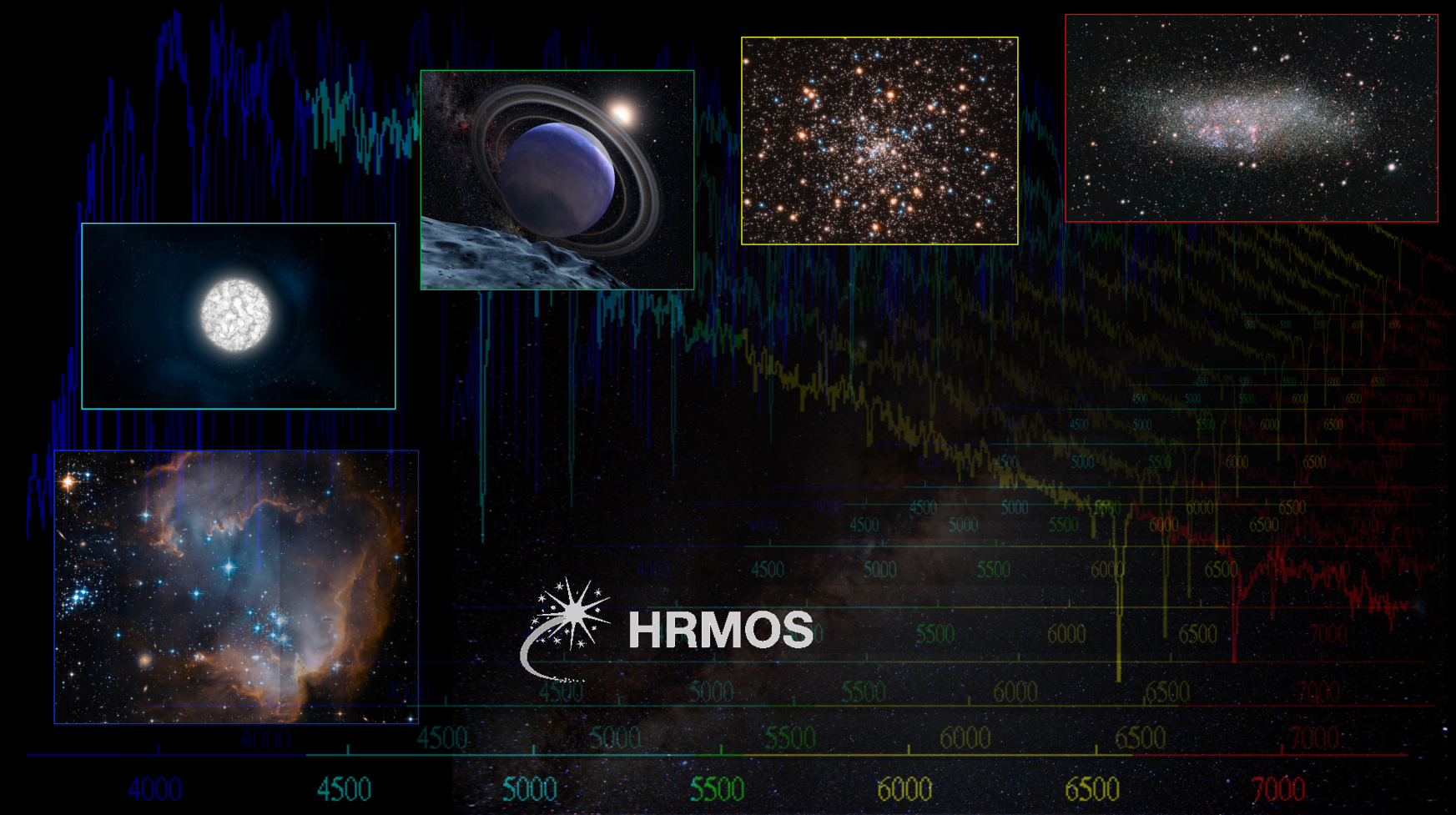
HRMOS is a facility instrument that will be proposed for the Very Large Telescope (VLT) of the European Southern Observatory (ESO). HRMOS will be designed to provide a combination of capabilities that are essential to carry out breakthrough science across a broad range of active research areas from stellar astrophysics and exoplanet studies to Galactic and Local Group archaeology. The key characteristics of HRMOS will be high spectral resolution (R = 60000 - 80000) combined with multi-object (20-100) capabilities and long term stability that will provide excellent radial velocity precision and accuracy (10m/s). The science cases presented in this White Paper include topics and ideas developed by the Core Science Team with the contributions from the astronomical community, also through the wide participation in the first HRMOS Workshop that took place in Firenze (Italy) in October 2021.
Comments and expressions of interest are welcome by contacting members of the Core Science Team.
R. Smiljanic, PI of the SAGA Team, is member of the HRMOS Core Science Team.
We are hiring two postdoctoral researchers
The SAGA Team has two postdoctoral positions (for 3 years each) available. The projects will be conducted in a collaboration with prof. Norbert Christlieb from the Center for Astronomy, University of Heidelberg, Germany. The overall aim is to develop a holistic analysis methodology that can be applied to spectra of metal-poor stars obtained by different instruments and return results that are on a single, consistent scale. The opportunities are related to CUBES and 4MOST and might involve also work related to HRMOS and/or WST (if there is interest). Deadline for applications is January 31st, 2024. The starting date is negotiable but could be as early as April of 2024.
OPUS-LAP research grant awarded to the SAGA Team
This three-year project will be conducted in a collaboration with prof. Norbert Christlieb from the Center for Astronomy, University of Heidelberg, Germany. The overall project aim is to develop a holistic analysis methodology that can be applied to spectra of metal-poor stars obtained by different instruments and return results that are on a single, consistent scale. The results will be used for a meticulous study of the properties of the first nucleosynthesis sources of stellar origin in the Universe and to reconstruct the early chemical evolution of our Galaxy. The research tasks will also include work to prepare for the analysis of metal-poor stars that will be observed with two new spectrographs, 4MOST and CUBES, in the near future. We will announce two post-doc positions to work with the team in Warsaw, Poland, soon!
Gaia FPR paper on solar system asteroids accepted for publication
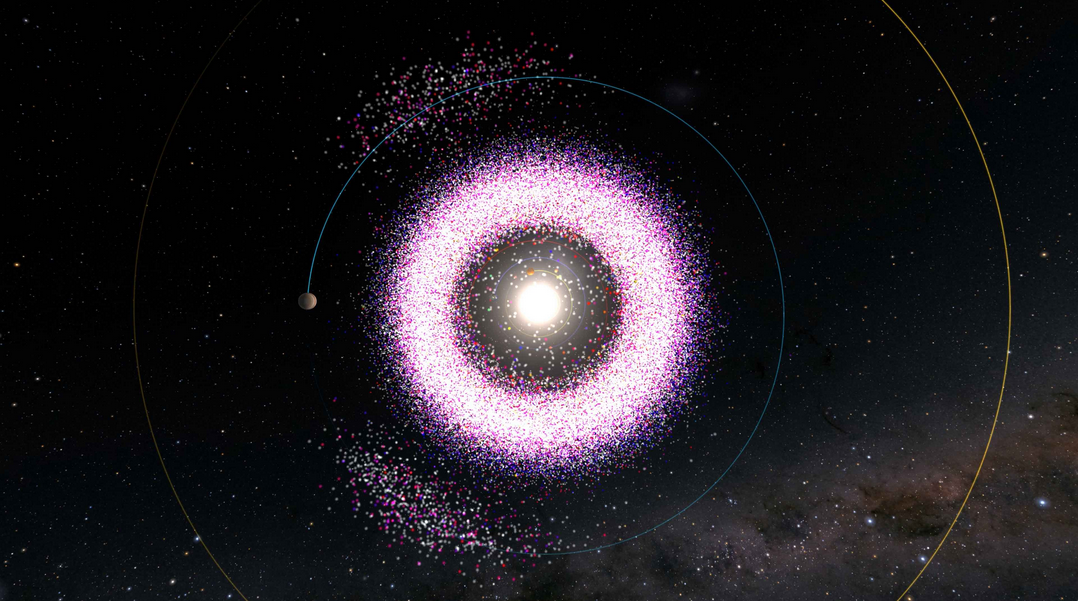
The Gaia Focused Product Release was made public on Tuesday 10 October 2023. The Gaia mission also contributes to the detection and characterization of solar system objects (SSOs), such as asteroids and moons of planets. In fact, although the mission design was not optimized for SSO detection, thanks to systematic measurements taken with Gaia has performed measurements of positions a hundred times more precise compared to previous ones obtained over past decades. The paper reports the exploitation of a sample of epoch astrometry for 157 000 asteroids, the same object in the Gaia Data Release 3, extended over the time coverage planned for the Gaia DR4, which is not expected before the end of 2025. This data set covers more than one full orbital period for the vast majority of these asteroids. The orbital solutions are derived from the Gaia data alone over a relatively short arc compared to the observation history of many of these asteroids. The sample includes near-Earth objects, main-belt asteroids, and Trojans. The paper describing the results has been accepted for publication at the Astronomy & Astrophysics journal.
R. Smiljanic, PI of the SAGA Team, is member of the Gaia Science Team.
Gaia FPR paper on Omega Centauri accepted for publication
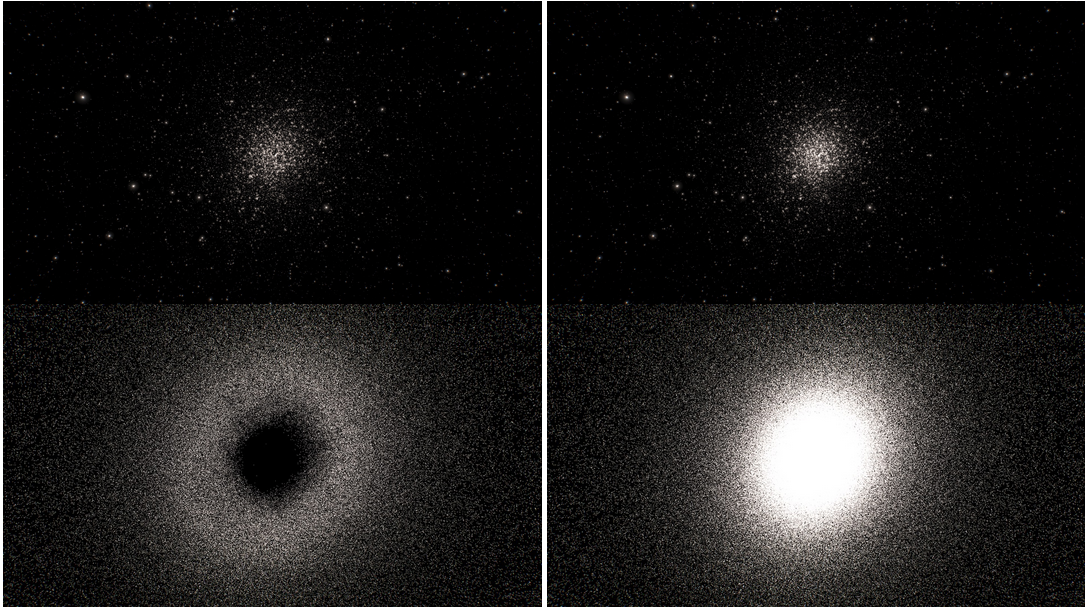
The Gaia Focused Product Release was made public on Tuesday 10 October 2023. For the first time, Gaia presents data captured with its special observation mode. A newly developed data reduction pipeline adds new sources to the already existing Gaia catalogue and calculates their information from full two-dimensional detector images. The pipeline is specialized to disentangle the information in extremely crowded regions in the sky, in which star images often overlap on the detector. One such region is the globular cluster omega Centauri, for which half a million new sources are now published by the Gaia Collaboration. Compared to the existing 1.8 billion Gaia stars this may seem few, but they are all in one and the same crowded region of the sky, and it increases the number of Gaia stars in the very core of this region tenfold. The paper describing the results has been accepted for publication at the Astronomy & Astrophysics journal.
R. Smiljanic, PI of the SAGA Team, is member of the Gaia Science Team.
Gaia FPR paper on strongly lensed quasars accepted for publication
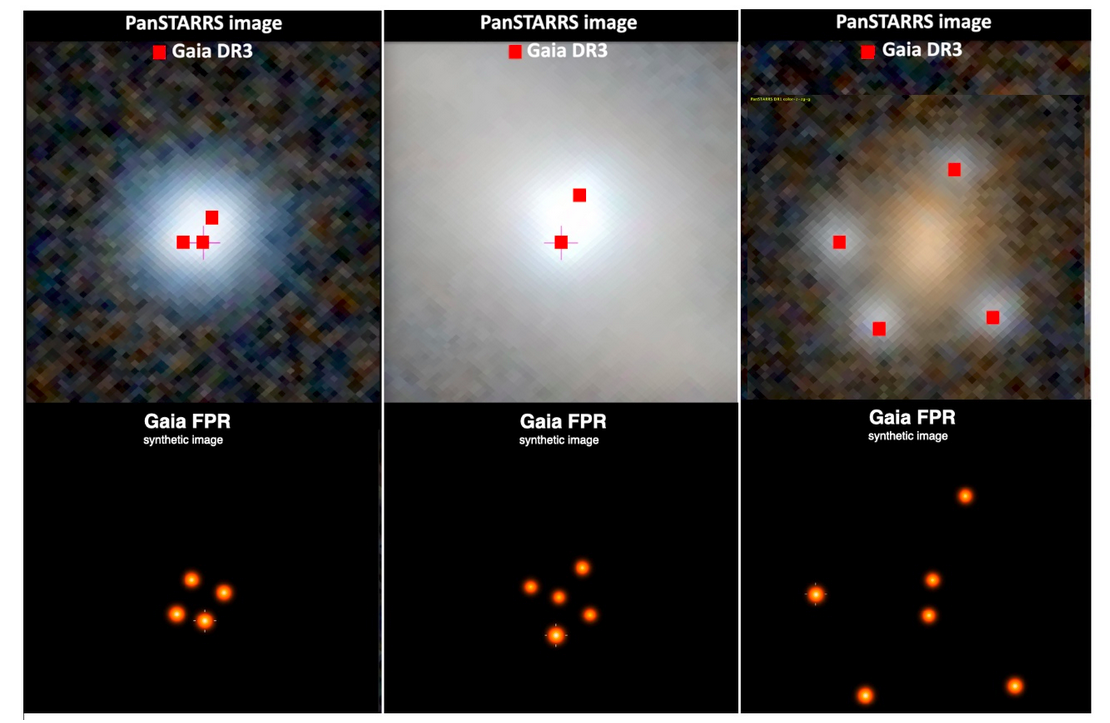
(Image Credit: Gaia Collaboration, A. Krone-Martins et al.)
The Gaia Focused Product Release was made public on Tuesday 10 October 2023. Gaia’s powerful resolution (~0.18”, comparable to an ant's egg seen at 1km) allows to observe the individual light coming from sources close to each other even though these sources are located far away from us. This has allowed to retrieve an impressive catalogue of more than 500,000 quasars with neighbours in their immediate vicinity; some of these are gravitational lenses, of which the majority is completely new. Some 3,000 lenses are expected in the most recent Gaia data release. With Gaia’s all-sky scanning mode observing all areas of the sky many times over the course of its mission lifetime, these sources are thoroughly mapped for the first time. The results of the research show a list of 381 lensed candidates, of which we identified 49 as the most promising. Beyond these candidates, the associate tables in this Focused Product Release allow the entire community to explore the unique Gaia data for strong lensing studies further. The paper describing the results has been accepted for publication at the Astronomy & Astrophysics journal.
R. Smiljanic, PI of the SAGA Team, is member of the Gaia Science Team.
Gaia FPR paper on Diffuse Interstellar Bands accepted for publication
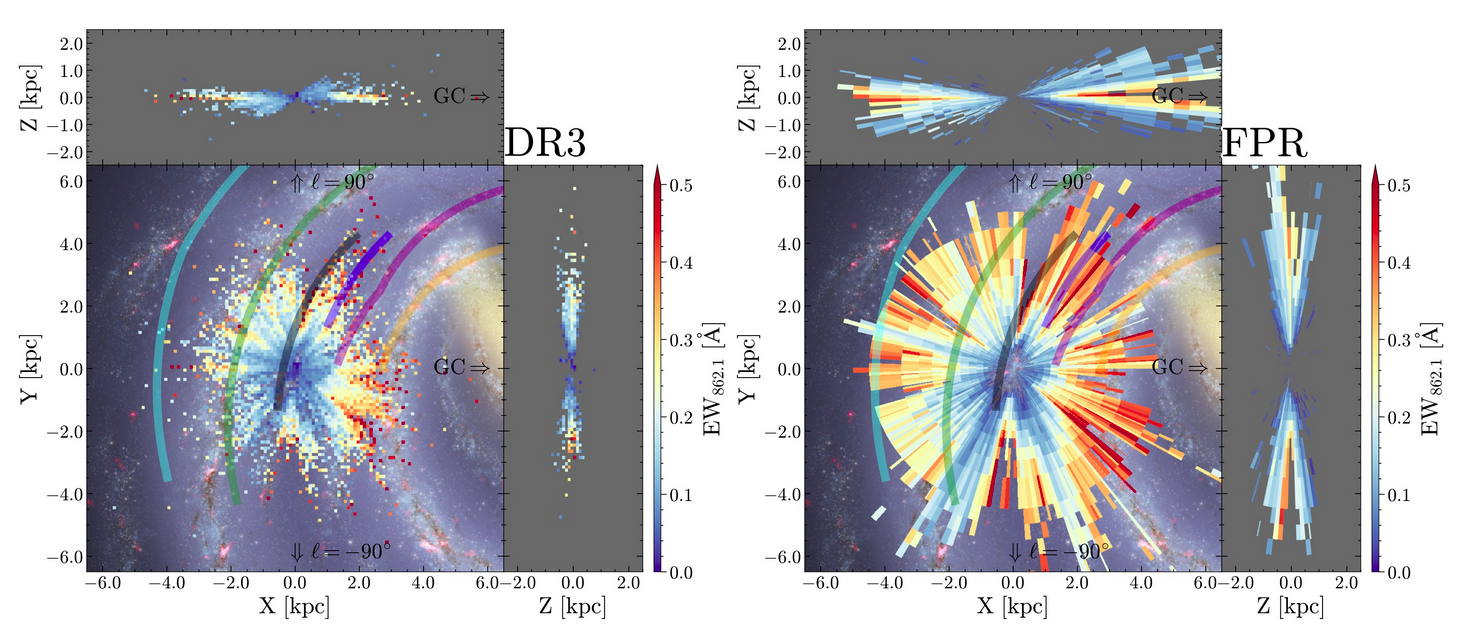
(Image Credit: Gaia Collaboration, M. Schultheis, et al.)
The Gaia Focused Product Release was made public on Tuesday 10 October 2023. Gaia surveys billions of stars and as such unveils the larger structures in our Milky Way. Gaia also allows to study molecules in interstellar space. The matter in between stars is made from dust and gas. Little do we know though of the exact composition of the interstellar matter. The interstellar matter can be seen in stellar spectra as interstellar absorption. Its imprint can also be seen on the entire spectrum altogether (it changes the colours of the source). Since about a century ago, mysterious features were spotted, which could not be traced back to a specific origin. These features are referred to as diffuse interstellar bands. These seem to behave similarly to dust absorption, but with notable yet elusive differences. More data is needed to unveil more hints on the source of this phenomenon and better understand their differences. Gaia mapped two diffuse interstellar bands, present in its RVS spectrum: one stronger and one weaker. It is the first time ever that a weak diffuse interstellar band is mapped with this detail and all-sky. The paper describing the results has been accepted for publication at the Astronomy & Astrophysics journal.
R. Smiljanic, PI of the SAGA Team, is member of the Gaia Science Team.
Gaia FPR paper on Long Period Variables accepted for publication
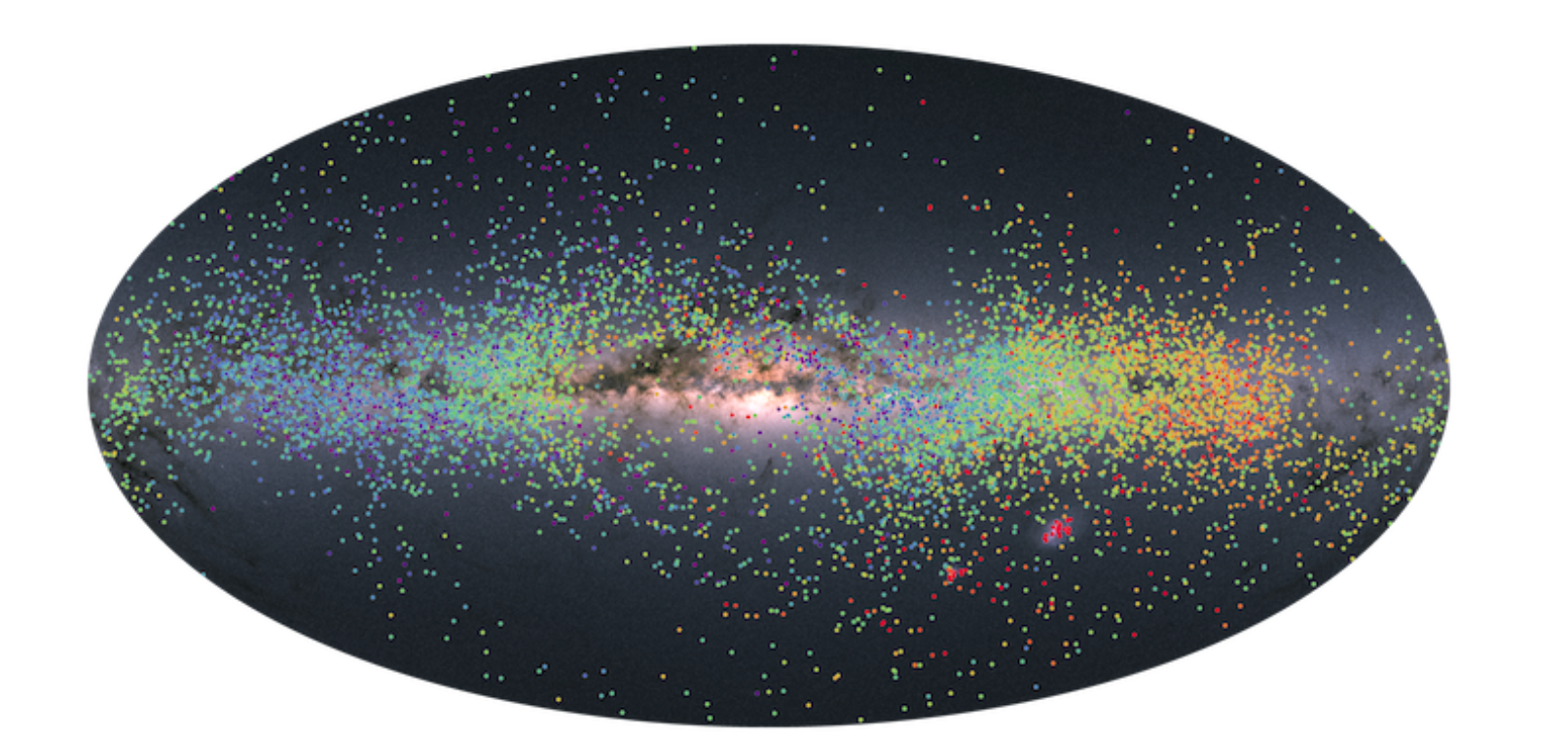
The Gaia Focused Product Release was made public on Tuesday 10 October 2023. The third Gaia Data Release (DR3) provided photometric time series of more than 2 million long-period variable (LPV) candidates. Anticipating the publication of full radial-velocity (RV) in DR4, this Focused Product Release (FPR) provides RV time series for a selection of LPVs with high-quality observations. Epoch radial velocities are provided for close to ten thousand LPVs. The significance of this release becomes visible when we realize that such radial velocity time series exist in the literature to date for only a few dozen Long Period Variables. The paper describing the results has been accepted for publication at the Astronomy & Astrophysics journal.
R. Smiljanic, PI of the SAGA Team, is member of the Gaia Science Team.
Gaia Focused Product Release (FPR)
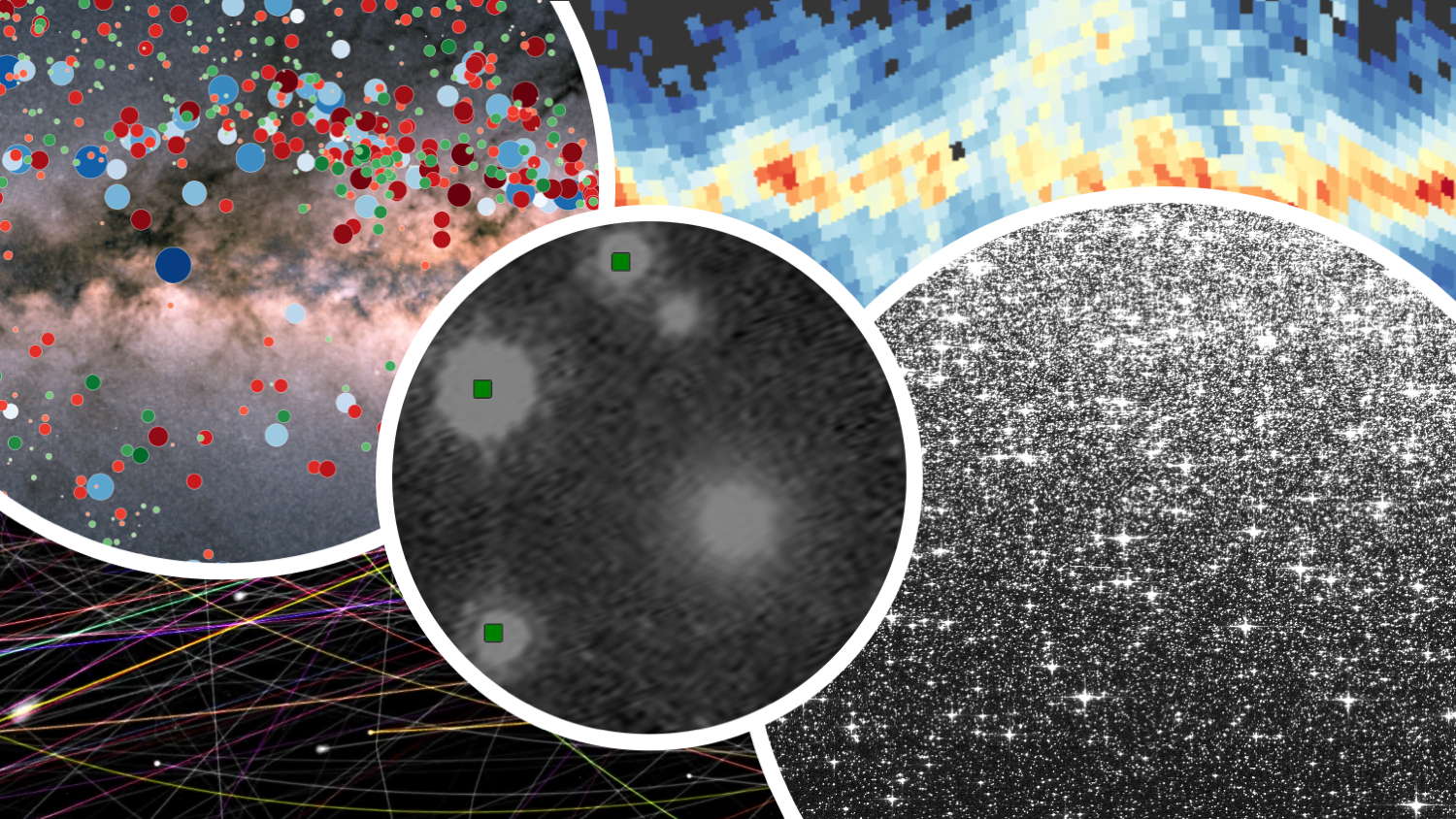 Five new Gaia data products are released together in the form of the Gaia Focused Product Release. Five papers describing
the FPR have been accepted for publication at the Astronomy & Astrophysics journal.
Five new Gaia data products are released together in the form of the Gaia Focused Product Release. Five papers describing
the FPR have been accepted for publication at the Astronomy & Astrophysics journal.
(Image Credit: ESA/Gaia/DPAC, middle image background Hubble Space Telescope.)
The Gaia Focused Product Release was made public on Tuesday 10 October 2023. The FPR contains five data sets: 1) Astrometry and photometry from engineering images taken in the omega Centauri region; 2) The first results of quasars' environment analysis for gravitational lenses search; 3) Extended radial velocity epoch data for Long Period Variables; 4) Diffuse Interstellar Bands from aggregated RVS spectra; and 5) Updated astrometry for Solar System objects. The Gaia Focused Product Release builds partly on the data period that went into Gaia's Data Release 3 but in case of the Solar System objects extends the stretch of time that forms the basis for the FPR data product. Each of the five data products is discussed in a separated paper that have all been accepted for publication at the Astronomy & Astrophysics journal.
R. Smiljanic, PI of the SAGA Team, is member of the Gaia Science Team.
New team member joining for a summer internship
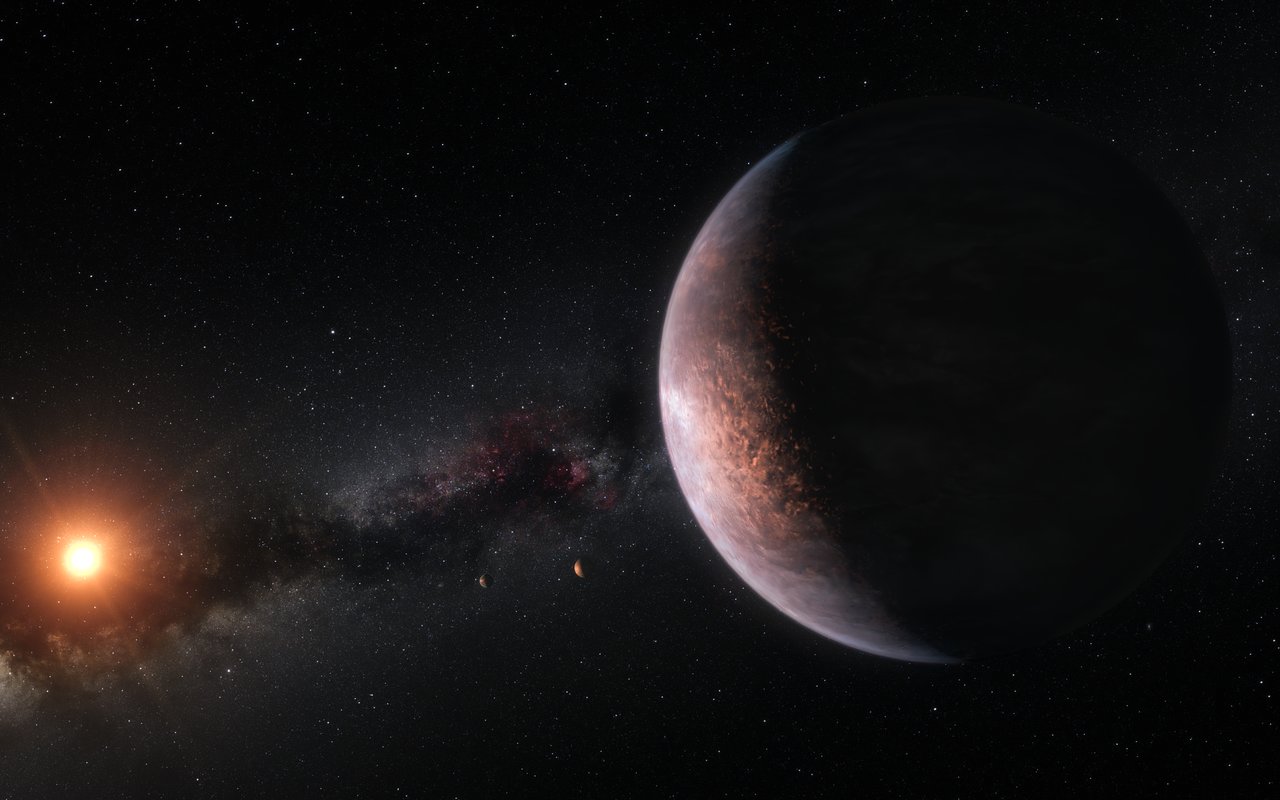 We welcome Verena Bellscheidt, physics student from TU Munich, for a summer
internshipp at the SAGA Team funded within the DAAD RISE Worldwide program.
We welcome Verena Bellscheidt, physics student from TU Munich, for a summer
internshipp at the SAGA Team funded within the DAAD RISE Worldwide program.
(Image Credit: ESO/M. Kornmesser; "Artist’s impression of the TRAPPIST-1 planetary system")
Her internship research project has to do with the chemical composition of stars with and without exoplanets. She will analyse high-resolution UVES optical spectra of three stars belonging to an open cluster. One of these stars is known to host a hot giant planet, the other two have no detected planets. We want to check if the presence of the planet(s) left any detectable signature in the chemical composition of the planet host. Verena will be working with the SAGA Team until mid-October.
You can reach Verena through her LinkedIn.
New paper accepted for publication
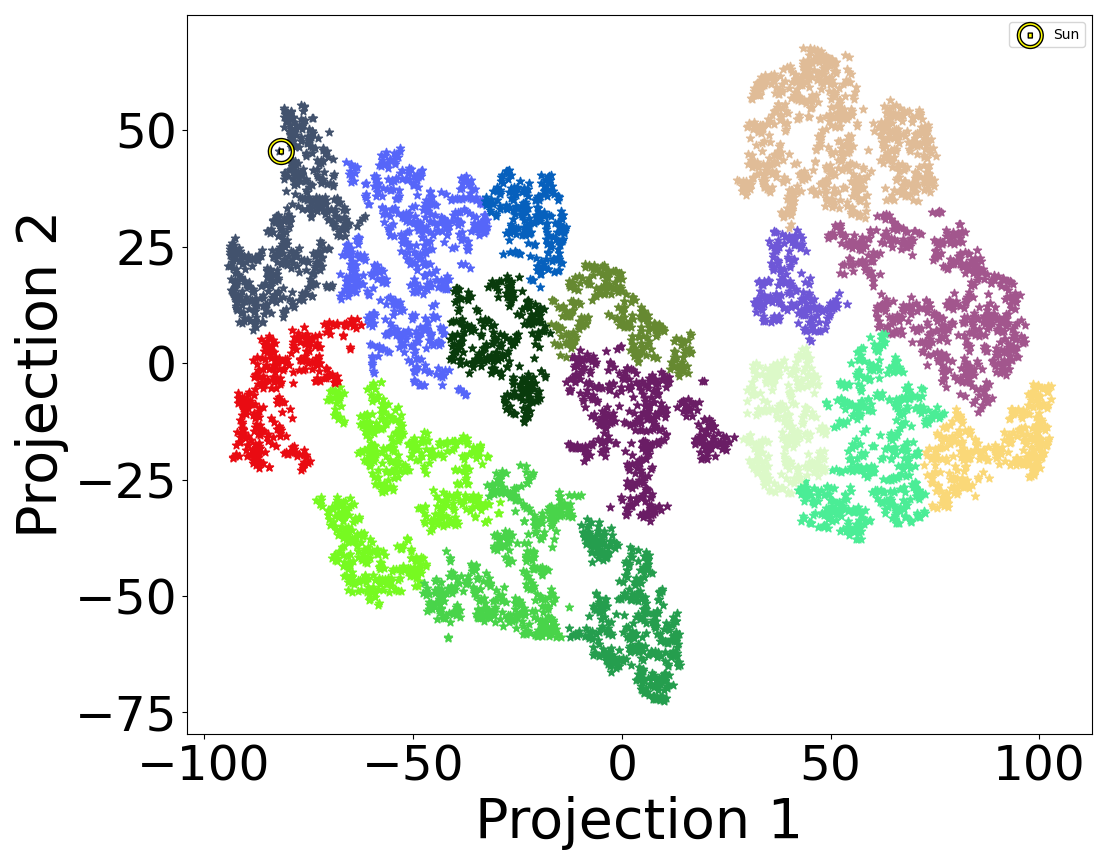
In this paper, we explored a sample of ~6600 metal-poor stars from the GALAH survey using unsupervised machine learning, trying to separate stars in a parameter space made of two normalised orbital actions, plus [Fe/H] and [Mg/Fe], without additional a priori cuts on stellar properties. We divided the halo stars in four main groups and discuss their properties in detail. We found a significant fraction of in situ contamination in all groups. Moreover, the accreted stars of these groups were found to have very similar chemical properties, except for those of the group of stars with most retrograde orbits. Our interpretation is that the selected sample shows at most two main sources of accreted stars. The major one is related to Gaia-Enceladus or Gaia-Sausage. The other, with very retrograde stars of lower metallicity, is possibly related to Thamnos and/or Sequoia. Stars of Gaia-Enceladus are r-process enriched at low metallicities, but a contribution of the s-process appears with increasing metallicity. A flat trend of [Eu/Mg] as a function of [Fe/H] suggests that only core collapse SN contributed to r-process elements in Gaia-Enceladus.
This is the first paper as first author of André Rodrigo da Silva, PhD student at the SAGA Team. The work was supported by the National Science Centre, Poland, through the OPUS grant 2018/31/B/ST9/01469 entitled "Near-UV stellar spectroscopy: uncovering the past and building the future".
EAS Annual Meeting 2023
The 2023 Annual Meeting of the European Astronomical Society is taking place between 10-14 July 2023, in Krakow, Poland. Almost all members of the SAGA Team are participating. We are presenting a total of 6 works, most at the Symposium 3 "Gaia: The (TWO) Billion Star Galaxy Census: The Magic of Gaia DR3".
Our participation in the conferece is funded by the National Science Centre, Poland, through the Sonata Bis grant 2019/34/E/ST9/00133 entitled "Playing CHESS with stars" and the OPUS grant 2018/31/B/ST9/01469 entitled "Near-UV stellar spectroscopy: uncovering the past and building the future".
WST Symposium in Vienna
The sympoisum "Science with the future WideField Spectroscopic Telescope" is taking place between 23-26 May, 2023, on the campus of the University of Vienna, Austria. The symposium brings together the community interested on the project of the Wide-field Spectroscopic Telescope, planned to be a 10-m class wide-field spectroscopic survey telescope with simultaneous operation of a large field-of-view and high multiplex multi-object spectrograph facility with both medium and high resolution modes (MOS), and a giant panoramic integral field spectrograph (IFS).
Maria Luiza L. Dantas, post-doc at the SAGA team, presented her idea of science case for WST in a contributed poster entitled "Unveiling the spatial properties of the largest and most massive galaxies with the WST". In addition, Rodolfo Smiljanic, PI of the SAGA Team, presented a talk with a summary of many ideas for Galactic Science possible with this facility and co-lead a discussion session.
The work of Maria Luiza and her participation in the symposium are funded by the National Science Centre, Poland, through the OPUS grant 2018/31/B/ST9/01469 entitled "Near-UV stellar spectroscopy: uncovering the past and building the future".
Rodolfo Smiljanic is deputy leader of the WST Galactic Science Working Group and also member of the WST Steering Committee. His participation in the workshop is funded by the National Science Centre, Poland, through the Sonata Bis grant 2019/34/E/ST9/00133 entitled "Playing CHESS with stars".
Frontiers in Nuclear Astrophysics
The "Frontiers in Nuclear Astrophysics" workshop is taking place between 21-26 May, 2023, on the campus of the Michigan State University, USA. The workshop brings together the community interested on nuclear physics and astrophysics to discuss progress in the understanding of the origin of the elements and the physics of neutron stars in the multi-messenger era. André Rodrigo da Silva, PhD student at the SAGA team, is presenting a contributed poster entitled "Spectroscopic follow-up of metal-poor stars with anomalous neutron capture element abundances in the GALAH survey". The poster discusses preliminary results of heavy element abundances in two metal-poor stars observed with the UVES spectrograph.
The work of André and his participation in the workshop are funded by the National Science Centre, Poland, through the OPUS grant 2018/31/B/ST9/01469 entitled "Near-UV stellar spectroscopy: uncovering the past and building the future".
i-process Nucleosynthesis Workshop
The "i-process Nucleosynthesis Workshop" is taking place between 15-19 May, 2023, in Limassol, Cyprus. During the workshop, different aspects of nucleosynthesis via the intermediate neutron capture process (i-process for short) will be discussed, including: i-process astrophysical calculations, connections to other nucleosynthesis processes, nuclear theory, nuclear experiment for the i process, and astronomical observations. André Rodrigo da Silva, PhD student at the SAGA team, is presenting a talk on May 18th, entitled " Spectroscopic follow-up of metal-poor stars with anomalous neutron capture element abundances in the GALAH survey". In this talk, André is presenting preliminary results of heavy element abundances in two metal-poor stars observed with the UVES spectrograph.
The work of André and his participation in the workshop are funded by the National Science Centre, Poland, through the OPUS grant 2018/31/B/ST9/01469 entitled "Near-UV stellar spectroscopy: uncovering the past and building the future".
Stellar Clusters in 4MOST
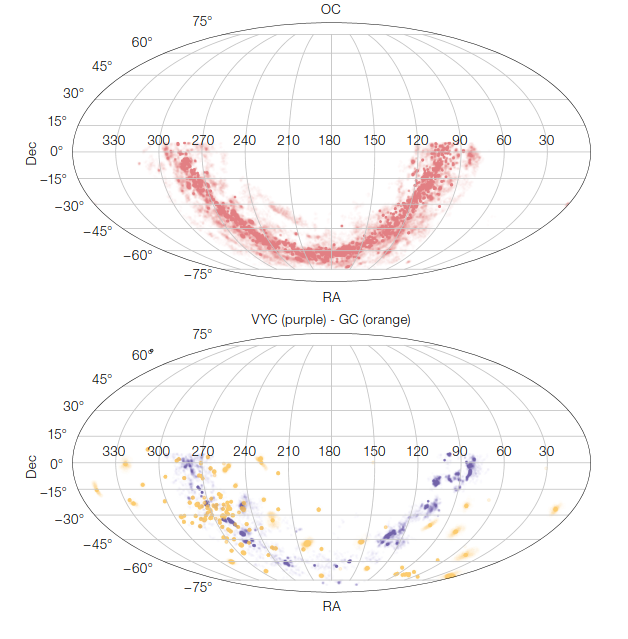
The 4MOST Stellar Clusters Survey will target essentially all the Galactic globular and open clusters and star-forming regions accessible to 4MOST (about 120 globulars, 1800 open clusters and 80 star-forming regions). This will: shed light on how clusters form, evolve, dissolve, and populate the Milky Way; calibrate complex physics that affects stellar evolution, on which our ability to measure accurate ages ultimately rests; and evaluate the contribution of star clusters to the formation and evolution of the individual Galactic components with unparalleled statistics.
The 4MOST Stellar Cluster Survey is lead by Sara Lucatello (INAF–Padua Astronomical Observatory, Italy), Angela Bragaglia (INAF–Bologna Astrophysics and Space Science Observatory, Italy), and Antonella Vallenari (INAF–Padua Astronomical Observatory, Italy). Rodolfo Smiljanic, PI of the SAGA Team, is a co-I of the 4MOST Stellar Clusters Survey.

